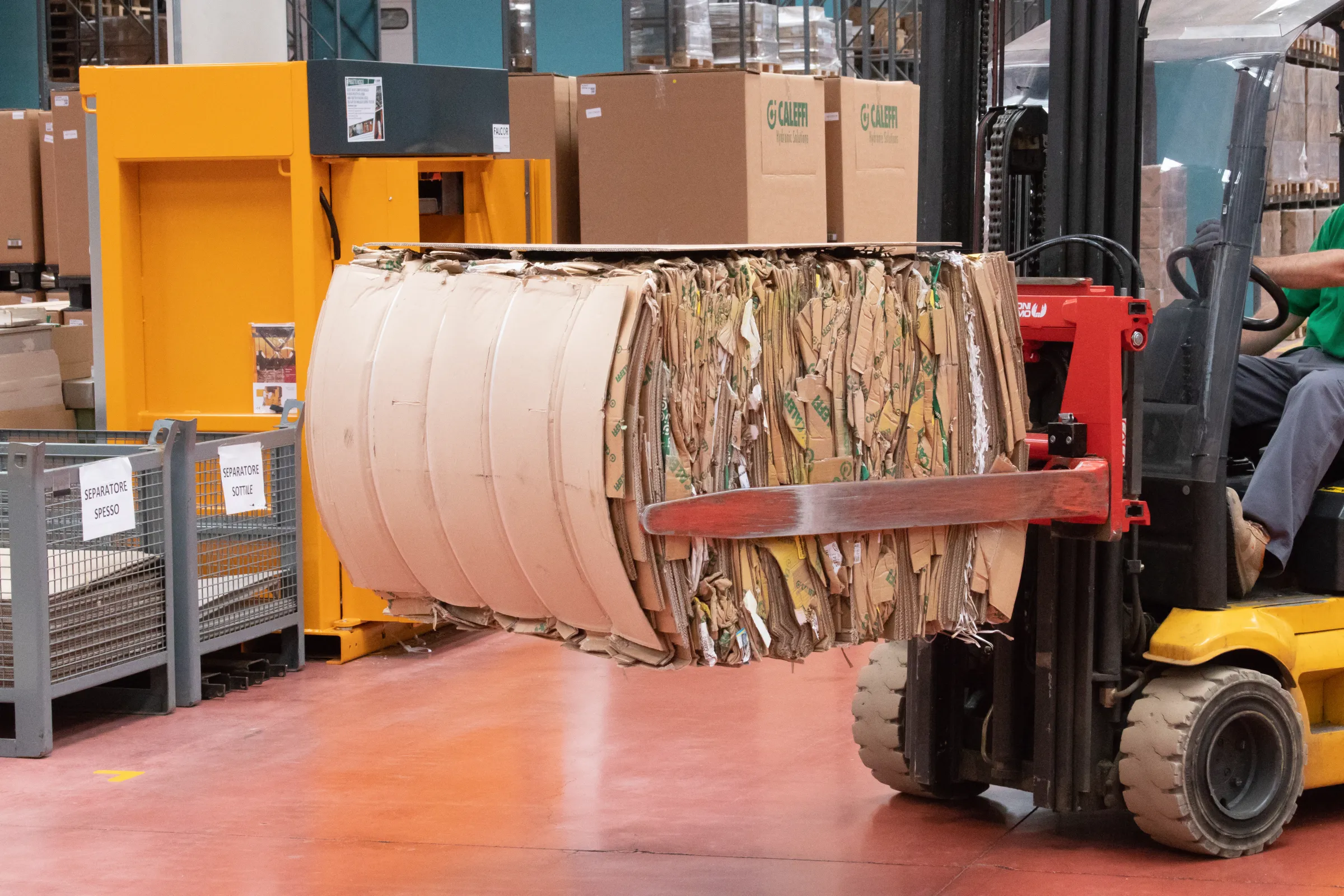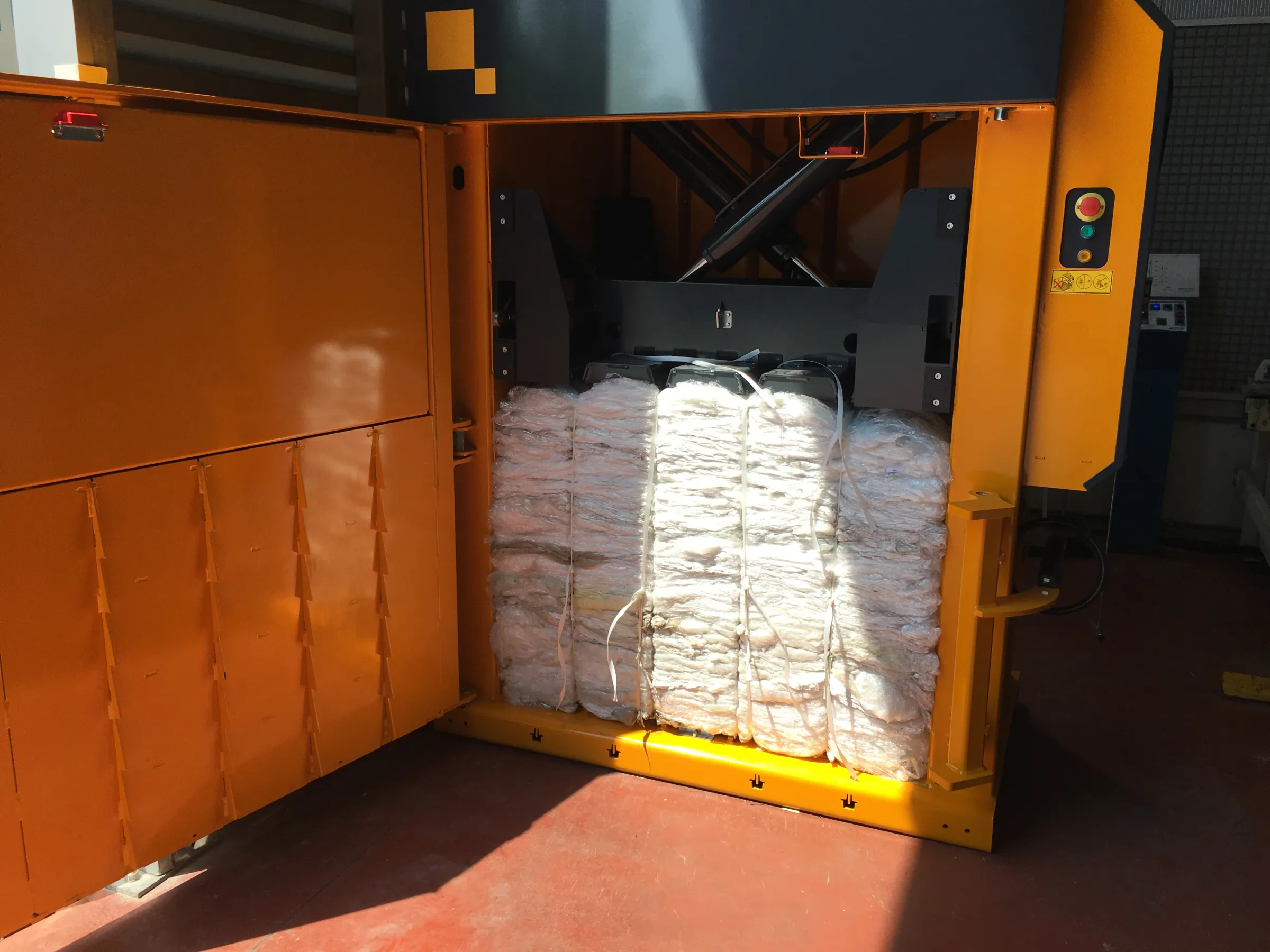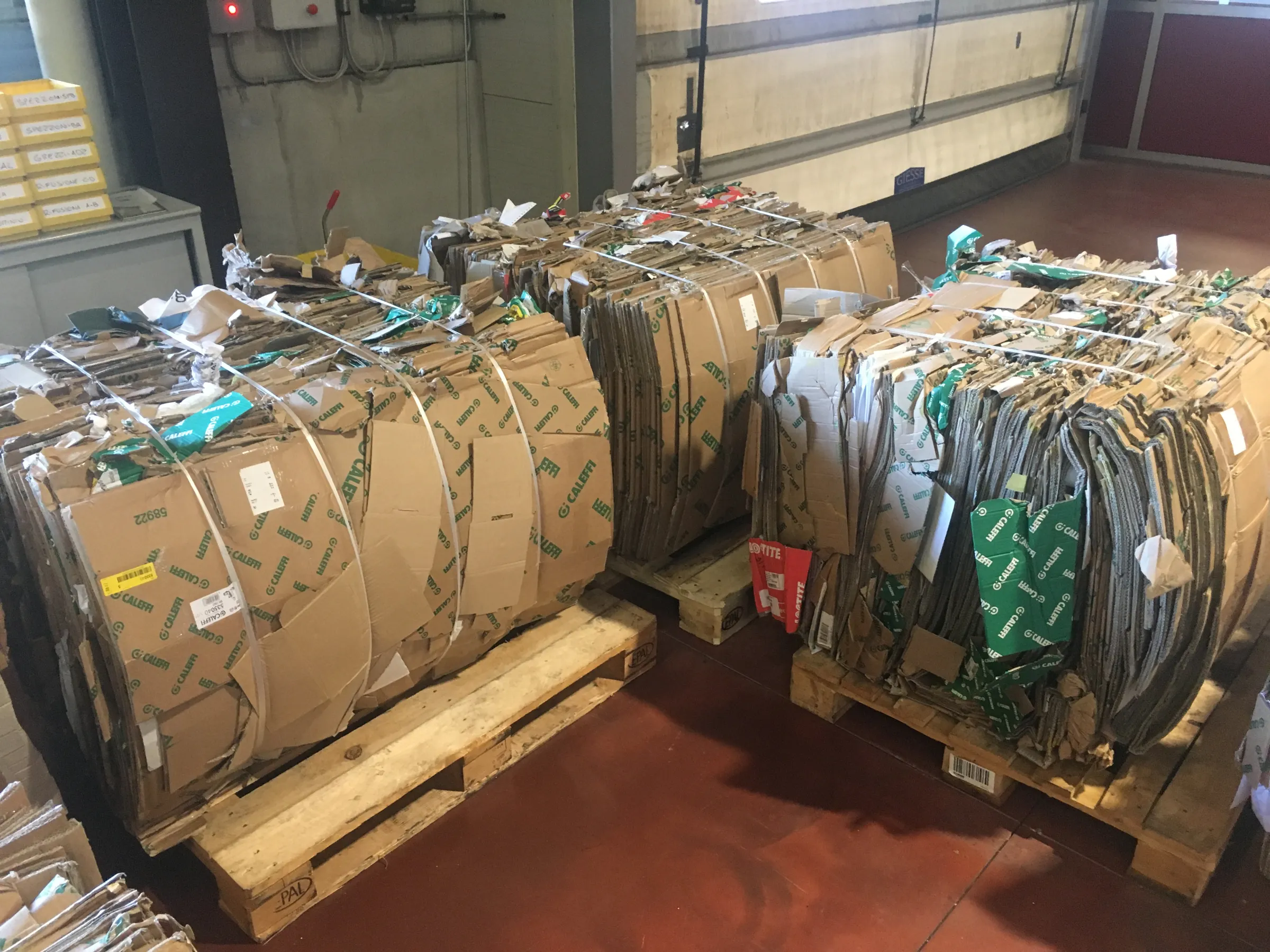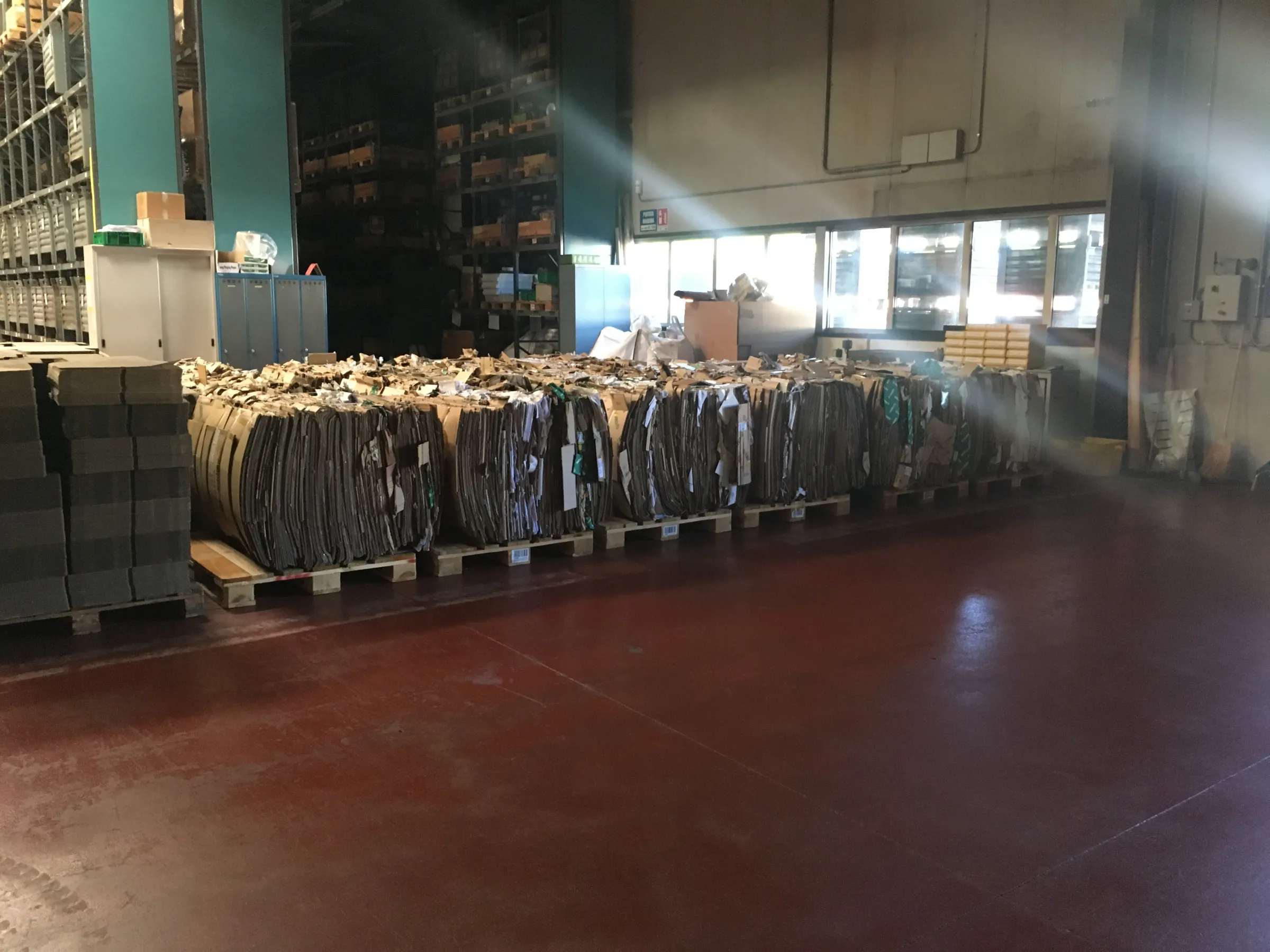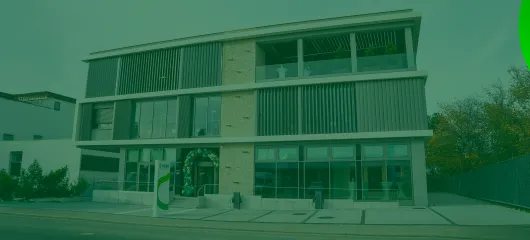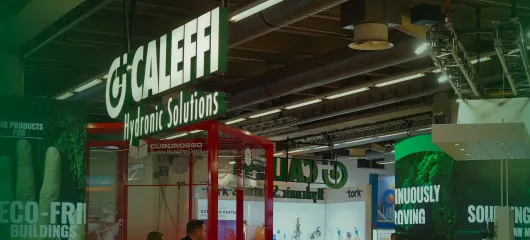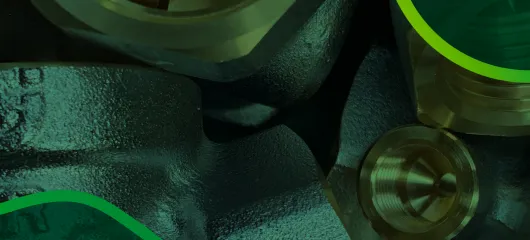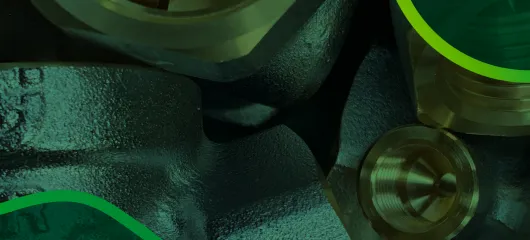Packaging recycling becomes a positive budget entry (environmentally sustainable)
At Caleffi, we produce more than 100 tonnes of packaging residues that can no longer be used, consisting of cardboard and polyethylene film. These weights are equivalent to significant volumes that need to be managed and, before the change, to annual “numbers” that for this purpose assume a certain importance: on approximately 60,000 m² of indoor area, the forklift trucks used to empty the containers covered 3000 km, thousands of Euro were spent on delivering waste to landfill sites, thousands of working hours were employed, and unproductive areas were occupied.
How did this need come about?
We have turned a habit into an opportunity, starting by listening to and observing the workers: the fundamental question that needed an answer was “why transport 30 kg of material in one cubic metre when we could transport 10 times as much in the same volume”? How can we transform production residues into value, albeit induced, for the customer? The investment that ensued took the company a few steps towards conscious respect for the environment.
How was packaging waste managed before the change?
The company collected cardboard and polyethylene separately in two different types of container distributed throughout the production areas. A daily forklift truck service then emptied them at the collection point. The disposal operator uplifted the containers at least once a week.
Observing the commitment that the activity required in terms of transfer frequency, distances travelled, and the content of the containers handled, we found that the volume to weight ratio of the material transported was very low. And so we seized the opportunity for improvement.
How did we redesign waste management?
We were able to reduce the volume for the same weight using compacting presses at the point where the waste is created.
First we made a map of the collection points and the amount of material for each one, with the intention of grouping some to obtain significant volumes that would mean distributing fewer presses and reducing handling from daily to no more than weekly. In this way, we found the stroke power of the presses and, above all, where to install them within the production area.
A crucial step was the testing period of approximately 4 months, with presses of different capacities and locations. This was unavoidable because it directly involved people on a daily basis to assess the benefits (and success) of introducing such a change. In 9 months from what started out as just an idea, Caleffi installed 21 compactors in its production plants.
How to measure the benefits?
For a recycling program of this magnitude, a return on investment was essential. The goals set by the Logistics Division were:
- save at least 60% of the working hours needed for waste disposal;
- reduce internal forklift truck travel by at least 70%;
- reduce delivery to the separated collection points by at least 60%;
- have a financial return from the sale of recycled material.
The best outcome? Recycling 100% of the packaging waste allows us to save at least 300 tonnes of CO2 emissions in the atmosphere (equivalent to 2000 trees), an especially important aspect for environmental sustainability.
The data obtained so far is encouraging: in 5 months we went from 35 to only 3 deliveries, to the satisfaction of the internal users who have seen an improvement in their activities.
From an idea that in itself might appear trivial, came a project with aspects that we believe are important: not only has continuous improvement reduced “waste” in terms of value for the customer, but we support environmental sustainability and pursue its goals, which is as important for company policy as it is for the community in the widest possible sense.




